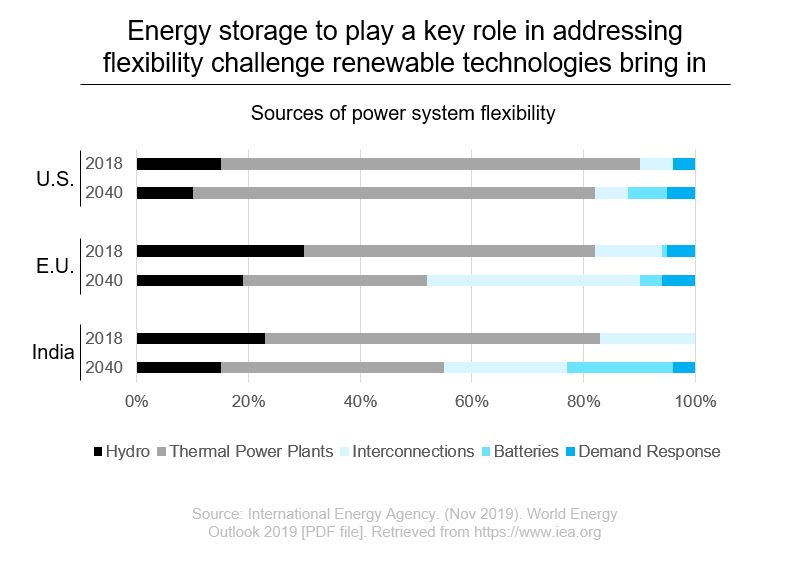Energy IQ: Five insights into the future of energy for facility professionals – Part II
By Aytek Yuksel, Content Marketing Leader - Power Systems

The International Energy Agency’s (IEA) annual World Energy Outlook aims to deepen our understanding of the future of energy. With this two-part series blog post, you can digest the insights most relevant to facility professionals when it comes to the future of energy. Part I of this blog post was themed “the growing role of electricity in our energy infrastructure, and the new challenges this brings to facility professionals.” Part II highlights three additional insights for facility professionals.
No. #3: Demand for power infrastructure flexibility grows faster than the demand for electricity
Renewable technologies bring astonishing benefits in terms of zero carbon emissions, but also introduce the challenge of flexibility. The continually increasing share of renewables in our energy infrastructure translates into an increasing share of variable electricity generation. Meanwhile, consumers are increasingly using electricity for cooling buildings and residences and to fuel their cars, changing the electricity demand profile. A combination of these two results in an increased need for power system flexibility.
While traditional power plants and interconnections will continue to be key levers to deliver flexibility, energy storage batteries are projected to be the rising star in solving this flexibility challenge, thanks to advancements in battery technologies and decreasing costs. It is estimated that there will be a 40-fold increase in in battery storage capacity by 2040, increasing faster than almost every other mainstream technology.
No. #4: Changing weather patterns is a key driver of increasing energy demand
IEA estimates that almost one-fifth of the growth in global energy demand in 2018 was due to changing weather patterns. This included warmer than usual summers creating an increasing need for cooling and colder winters requiring greater heating needs. As the economic activity continues to increase and expands the consumers' wealth, more people will need cooling in the summers and heating in the winters. For businesses, these changing weather patterns create the need for increased resiliency in their energy infrastructure and an increase in their energy related costs.
No. #5: Two technologies are forecasted to make the biggest gains in levelized cost of electricity (LCOE)
While building a new coal plant no longer offers the lowest LCOE in many regions, existing coal plants continue to have the lowest LCOE across most regions today. Meanwhile, there are two technologies that are making big gains to deliver lower LCOE in the next two decades: offshore wind and solar photovoltaic (PV).
Offshore wind is positioned to experience the biggest gains in lowering LCOE, and is expected to be even less than solar PV in regions such as China and the European Union. Moreover, offshore wind projects already feature annual capacity factors of 40-50%, which are well above capacity factors for solar PV and approximately the same with gas-fired power plants in several regions.
Facility professionals shape the future of energy for their businesses. Their energy related decisions yield outcomes in many areas including the environment, economics and reliability. Insights shared in this article are aimed to keep the facility professionals' perspective of the future of energy fresh and current.
Sign up below for Energy IQ to periodically receive relevant insights and trends about energy and electricity sectors. To learn more about distributed generation solutions Cummins Inc. offers, visit our webpage.
Think your friends and colleagues would like this content? Share on LinkedIn and Facebook.
Author Profiles

Aytek Yuksel, Content Marketing Leader - Power Systems
Aytek is a marketing leader at Cummins, focusing on technology and thought leadership. Since joining in 2008, he has held various marketing roles and now shares insights on markets, technologies, and energy transition. Aytek lives in Minneapolis with his wife and two kids.
Related Tags